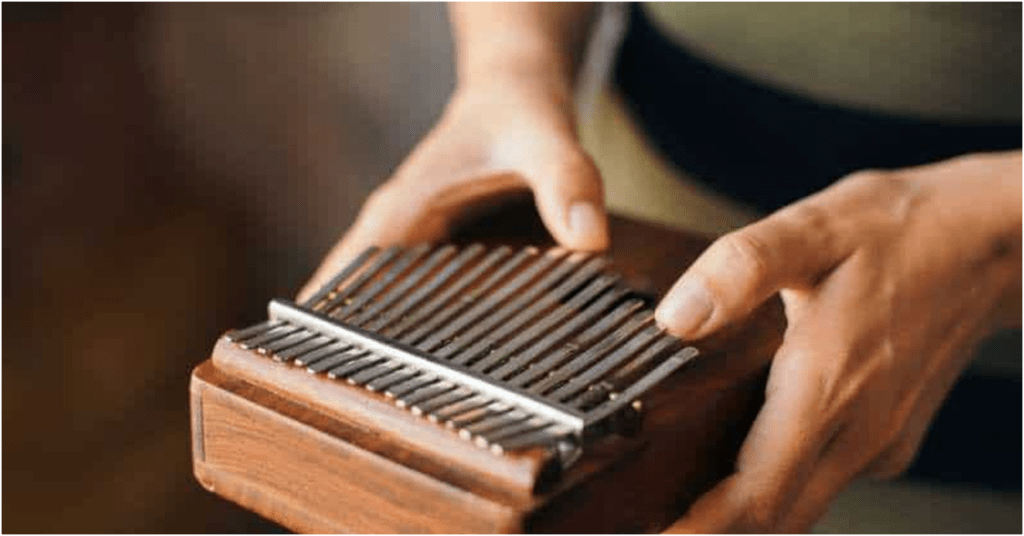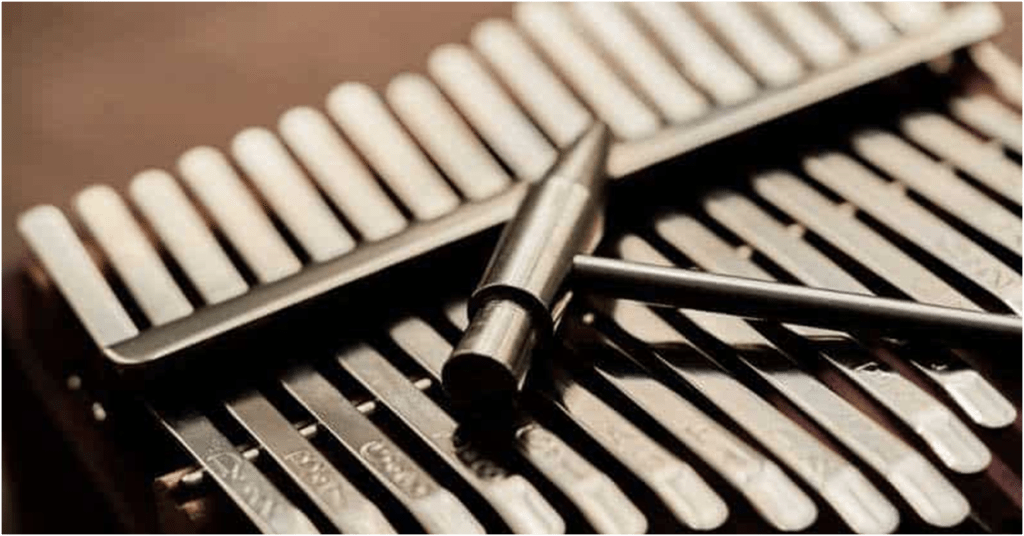A Kalimba is also called Thumb piano,it’s an instrument made of wood and metal.The soundboard is wooden,and the keys are metal.There are two variations if you can play:the 17key Kalimba and 15key option.

The Kalimba is an excellent instrument for numerous African celebrations and musical endeavors and was developed in South Africa. It has keys and a soundboard that make it look like a piano, and you can tune it to make any sound you want.
There are numerous variations of this instrument that are referred to by various African names. The Kankobela, for instance, is a game played in Zambia that substitutes seven to twelve keys for the standard 15.
It is a hand-held instrument that you play with your fingers, despite the fact that it may have tines, or keys, like a piano. One of the instruments that is easiest to learn to play is the kalimba.
How Do You Play the Kalimba?

The Kalimba is easy to learn because all you need are good thumb dexterity and patience. You must hold the Kalimba in both hands and pluck the keys with your thumbs to play it.
Because they give your finger plucks more leverage, many seasoned players advise growing your nails before playing. Whether you are purchasing a brand-new instrument or keeping an older one that you haven’t used in a while, it is best to check each tine to see if they are dead.
The most common Kalimbas have 15 and 19 keys, but the number of keys can range from 5 to 21. It’s easier to play with fewer keys, but you can’t play more difficult songs with fewer keys.
You should select fewer keys to learn depending on how you intend to use the Kalimba, either professionally or as a hobby. You can increase the number of keys and, as a result, the number of songs you can play as you get better at using the instrument.
But if you want to use your Kalimba professionally, you should know how to tune it in case it doesn’t sound right when you play a certain tone.
How To Tune Your Thumb Piano?

Tuning a Kalimba is a straightforward process and only requires a small hammer-like tool to complete. The hammer is appropriately called a “Kalimba tuner,” fits in the palm of your hand, and is relatively lightweight.
To start the tuning process, grab the Kalimba with one hand and the tuner with the other. After figuring out which key is out of tune (You can use a phone app for that), gently knock on it from the bottom to raise the pitch or from the top to lower it.
The amount of times you have to knock on it depends on how out of tune the tine is. It’s always best to check the tone as you fix it to ensure you get it correctly tuned. You can place the phone app or mechanic tuner you used next to the Kalimba while adjusting to get the best results.
After tuning, put away your tuna instrument and prepare the Kalimba for a festive show or celebration.
Where Do People Usually Play Kalimbas

The Kalimba players usually reside in Africa, waiting for the opportunity to play their traditional Zimbabwe-inspired instrument for a special event. This wooden piano gained significant popularity during the 1980s with the help of Thomas Mapfumo, a famous musician.
Most people don’t know about Kalimba instrument since it is not in mainstream bands’ instrument sets. However, with the rise of YouTube and helpful tutorials on how to use the instrument, the instrument has gained even more popularity, especially among college students.
While some people use it to play Kalimba songs during smaller celebrations, most of the time, it is a personal entertainment tool for those who want a bit of sound during relaxation time. It is not uncommon for many to lay in bed and gently pluck the keys while they rest their eyes.
What Is A Kalimba? Final Thoughts

A Kalimba is a beautiful African instrument that many people use to create faint tunes during relaxation. Depending on your skill level, you may opt to start with the 5-key Kalimba, or if you’re feeling a little bold, you can go up to the 21-key option.
Using the instrument is not hard, and tuning it is even easier. Now you’ll be ready for the next time your music teacher asks you to play this traditional instrument.
